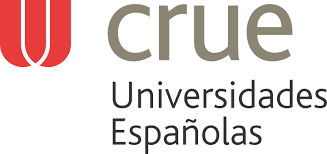Femicide/feminicide: an emergent way out against women violence against them
DOI:
https://doi.org/10.22335/rlct.v3i1.132Keywords:
Femicide, patriarchy, criminality, violence against womenAbstract
Femicide/femicide borns in the context of extreme violence against women as a concept that makes visible, and has been developed with the foundation of the feminist movements positioning them politically at the point which obtained the sanction and protection of international instruments, likewise in reason for the concern of the states for this phenomenon and its implications, Latin American countries have developed domestic legislations in the criminal field to avoid these behaviors, nonetheless Colombia has not been one of them and nowadays although it has implemented several standards in favor of the protection of women, it is in the debate and assimilation of the above mentioned concept.
Downloads
References
ANTONY, C. (2011). "Compartiendo criterios y opiniones sobre femicidio/feminicidio". En Contri buciones al debate sobre la tipificación penal del femicidio/feminicidio. Perú: Cladem.
CARCEDO, A. y SAGOT, M. (2000). Femicidio en Costa Rica 1990-1999. San José.
CARVAJAL, S. C. (2010). "Derechos de la mujer en el Sistema Interamericano de Derechos Humanos". En Derechos de la mujer en el Derecho Internacio nal de los Derechos Humanos. Bogotá: Ibáñez.
COOMARASWAMY, R. (1999). Relatora Especial sobre la violencia contra la mujer. La violencia contra la mujer en la familia. Naciones Unidas.
CEDAW, Recomendación general 19. La Violencia contra la Mujer.
________. (2007). Comunicación No. 6/2005, Fatma Yildirim vs. Austria, 39° período de sesiones.
CORPORACIÓN HUMANAS-Centro Regional de Derechos Humanos y Justicia de Género. (2008). La situación de las mujeres víctimas de violencias de género en el sistema penal acusatorio. Bogotá: AECID.
CORTE INTERAMERICANA DE DERECHOS HUMANOS. Caso del Penal Miguel Castro Castro vs. Perú.
CORTE CONSTITUCIONAL. Magistrado Ponente: Dr. JORGE IVÁN PALACIO PALACIO. (2010). Sen tencia C-776/10.
________. Magistrado Ponente: Dr. RODRIGO ESCOBAR GIL. (2005). Sentencia C-674/05.
________. Magistrado Ponente: Dr. ALEJANDRO MARTÍNEZ CABALLERO. (1996). Sentencia C-408/96.
EUROPEAN COURT OF HUMAN RIGHTS (ECHR). Case of Opuz v. Turkey, Judgment of June 9th, 2009.
IBÁÑEZ, J. (1986). Más allá de la sociología: el gru po de discusión. Madrid: Siglo XXI.
LAGARDE, M. (1992). "El feminicidio, delito contra la humanidad". En Feminicidio, justicia y derecho. Editoras: Comisión Especial para Conocer y dar Seguimiento a las Investigaciones relacionadas con los Feminicidios o la Violencia ejercida por los Hombres contra las Mujeres en su Deseo de obtener Poder, Dominación o Control.
NACIONES UNIDAS, Asamblea General. (2006). E s t u d i o a f o n d o s o b r e t o d a s l a s f o r m a s d e v i o l e n c i a c o n t r a l a m u j e r. Informe del Secretario General, Sexagésimo primer período de sesiones.
________. (1994). Declaración sobre la Eliminación de la Violencia contra la Mujer. Resolución de la Asamblea General 48/104.
________. (1995). Informe de la Cuarta Conferen cia Mundial sobre la Mujer. Beijing. Declaración y Plataforma de Acción de Beijing aprobada en la 16ª sesión plenaria.
________. (1991). La mujer. Retos hasta el año 2000.
RAMÍREZ, E. (2000). La investigación socio jurídica. Santa Fe de Bogotá D. C.: Ediciones Doctrina y Ley Ltda.
TOLEDO, P. Tipificación del femicidio/feminicidio: hacia el abandono de la neutralidad de género en el Derecho Penal frente a la violencia contra la mujer. Cladem. (15 de julio), http://www.anuariocdh.uchile.cl; ccj.ufpb.br/nepgd/imagen/stories/pdf/tipitifación.pdf
UNIVERSIDAD SANTIAGO DE CHILE. (2008). Incorpo ración de la perspectiva de género y delitos contra la vida humana independiente, propuesta de modi ficación al Código Penal Chileno. Proyecto Sernam.
ZAFFARONI, E. R. (2000). "El discurso feminista y el poder punitivo". En Las trampas del poder puniti vo. El género en el Derecho Penal. Buenos Aires: Editorial Biblos.
Informe Regional: Situación y análisis del femicidio en la región centroamericana. (2006).
Downloads
Published
Issue
Section
License
This journal provides free and immediate access to its content (https://creativecommons.org/licenses/by/4.0/legalcode#languages), under the principle that making research available to the public free of charge supports greater global knowledge exchange. This means that the authors transfer the Copyrights to the journal, so that the material can be copied and distributed by any means, as long as the authors’ recognition is maintained, and the articles are not commercially used or modified in any way.































